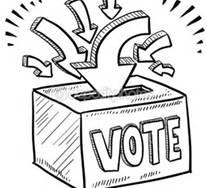 Australia has compulsory voter registration at age 18, and compulsory voter participation. Those who don't vote pay a fine. We should follow their example. Instead of having to wage a constant opposition against right wing efforts to suppress voter participation, we should be mandating that participation.
Australia has compulsory voter registration at age 18, and compulsory voter participation. Those who don't vote pay a fine. We should follow their example. Instead of having to wage a constant opposition against right wing efforts to suppress voter participation, we should be mandating that participation.We should be more proactive.
In a typical election cycle, we consider it a badge of honor when Minnesota has one of the highest voting rates; most states average around 50% - less in off-year elections. Minnesota has had the highest voter turnout in twelve of the last sixteen elections, and THE highest in the past eight, averaging around 67.6% voter turnout, according to the Christian Science Monitor.
Even that turnout is poor, compared to other similarly developed nations, wealthy nations, with representative governments. Why? Many of them have compulsory voter participation. We should consider it as well.
Looking at studies of before-and-after comparisons of legally requiring voter participation, we see a big improvement. An excellent comparison was done in this study on before and after compulsory voting in Australia. As we could expect here, the libertarian leaning 'you aren't the boss of me' crowd objected. The legislation passed anyway - and here in MN, with our exemplary voting participation, we should be looking at new ways to lead the nation, including passing such laws, and seeking to have them passed on a national level.
It makes much more sense than fighting pitched battles to prevent every new instance of voter suppression by the right.
Compulsory voting in Australia: Turnout with and without it Jonathon Louth, University of Adelaide Lisa Hill, University of Adelaide
Australia has, it can be argued, the most efficient, effective and equitable compulsory voting system in the world and it enjoys turnout levels that are the envy of the industrial-ised voluntary voting world. It would be hard to find another system with such high levels of voter turnout coupled with such low transaction and opportunity costs to voters. Compulsory voting was introduced at the federal level in 1924 to address the problem of low voter turnout. It proved an extremely effective and well-tolerated
remedy. The 1903 federal election turnout had only been 46.9 per cent of registered voters (RV) (Australian Electoral Commission [AEC] 1999), and at the last federal election held before the introduction of compulsory voting (1922) the average turnout of registered voters had been 58.7 per cent.
But turnout at the first federal election after 1924 (in 1925) surged dramatically, to an average of 91.4 per cent (RV). Data taken from the nine elections preceding and the nine following the introduction of compulsory voting shows that average voter turnout increased by 30.4 per cent (RV) (Jackman 2001). Turnout rates among the voting age population in Australia have remained consistently high, against the trend of steadily declining voter participation in advanced democracies (Blais 2000; Gray & Caul 2000). In thepostwar period, the average turnout rate has been around 83 per cent of voting age population (VAP) and 94.5 per cent (RV).In fact compulsory voting has been so effective at maintaining high turnout here that it has ‘rendered the study of turnout in Australian elections virtually irrelevant’ (Jackman 1997, p. 5).
Other well-administered systems in established democratic settings have enjoyed similar results. For the period 1946–2003, Belgium has had an exemplary turnout rate, of around 93 per cent (RV). Similarly, in The Netherlands, for the 53 years when compulsory voting was in force (1917–70), turnout was consistently above the 90 per cent (RV) mark. In 1970, the Dutch Parliament voted 91–15 to repeal the legal compulsion to vote (Irwin 1974, pp. 292–93). A drop in turnout followed immediately. Between 1946 and 1967, the average turnout had stood at 94.7 per cent (RV). The overall average in the post-compulsory voting era dropped to 81.4 per cent—and it continues to decline. The last four national elections (1994–2003) showed an average turnout of 77.8 per cent (RV). From this data we can see that there has been a 12–15 per cent reduction in turnout (using both RV and VAP data) and as much as 20 per cent for individual elections.

